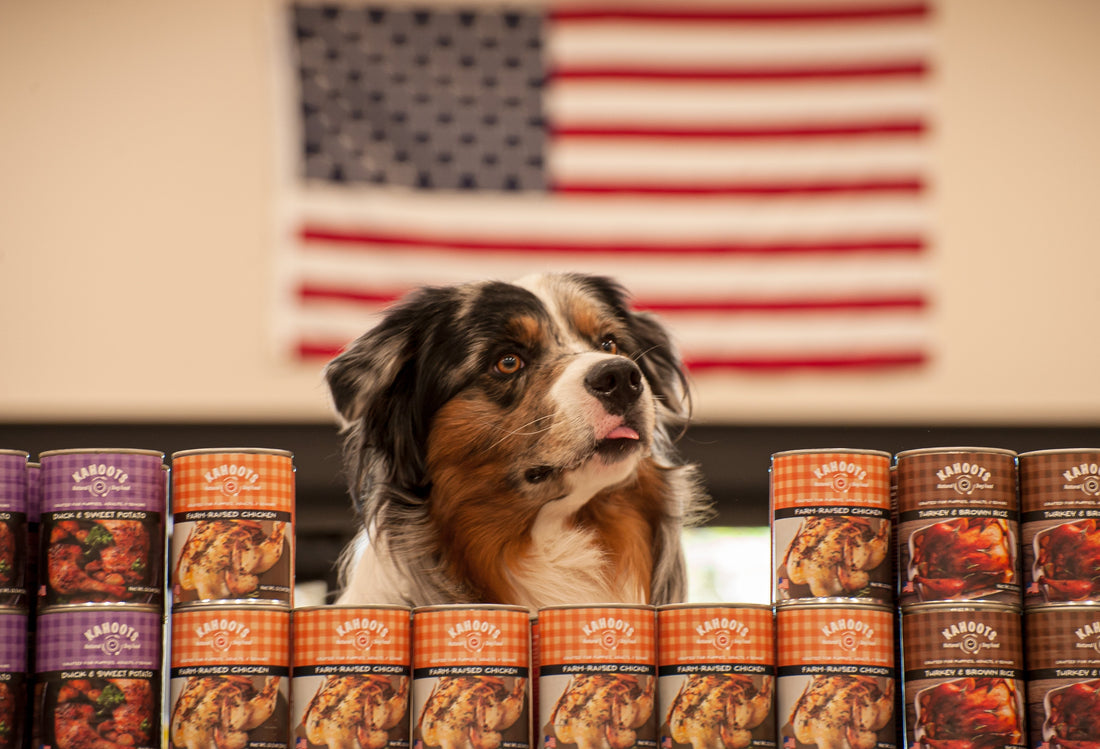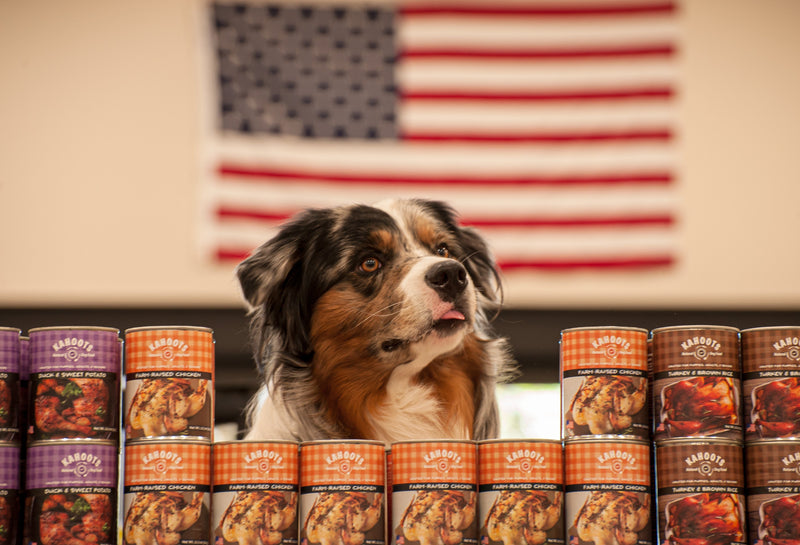Just like humans, dogs have distinct nutritional needs at different stages of their lives. From the early days of puppyhood to the twilight years of their life, a dog's dietary requirements evolve as they grow, develop, and experience changes in their physical health.
Dogs, as descendants of wolves, thrive on a diet of primarily animal-based proteins and fats, along with some plant-based nutrients. Their physiological design, from their strong jaws and sharp teeth to their short digestive tracts, has equipped them to efficiently process and derive energy from these sources. However, modern domesticated dogs often have different dietary requirements based on factors like breed, size, age, and lifestyle. Consequently, understanding your dog's nutritional needs is crucial to maintaining their overall health and well-being.
Puppy feeding and nutrition
Puppies require proper nutrition to support their rapid growth and development during the first few months of life. They have higher energy and protein requirements compared to adult dogs, as their bodies are busy building muscle, bone, and other tissues. It's essential to choose the right puppy food, taking into consideration the specific needs of small, medium, and large breed puppies.
Gradually weaning very young puppies from their mother's milk to solid food is an essential process for their developing digestive system. Introducing solid food too quickly can cause digestive upsets, while a slow and gradual transition helps their bodies adapt to processing new types of nutrients. Start by offering small amounts of puppy-specific food mixed with milk replacer, slowly increasing the ratio of solid food to milk over time.
Monitoring your puppy's growth during this period is important to ensure they are receiving the appropriate amount of nutrients without overfeeding. Keep an eye on their weight and overall health, and adjust portions as needed.
Once your puppy is fully weaned, you’ll need to make sure they’re getting an appropriate amount of calories throughout the day to support their growth. More on this later.
Adult dog feeding and nutrition
Adult dogs need a healthy and balanced diet to maintain their overall well-being. Their energy requirements will depend on their size, breed, and activity level, so it's essential to choose a suitable dog food that meets their specific needs. Adult dogs require a balanced intake of protein, fat, and carbohydrates, along with essential vitamins, minerals, and other micronutrients.
Keeping an eye on portion sizes and adjusting feeding schedules is vital to prevent obesity, which can lead to numerous health issues. Pregnant or lactating dogs will have special nutritional requirements to ensure the health of the mother and puppies.
Senior dog feeding and nutrition
As dogs age, their nutritional needs change due to age-related factors such as reduced activity levels and metabolic changes. Senior dogs typically (though not always) have lower energy requirements compared to younger dogs, but still need sufficient protein and fat intake to maintain muscle mass and a healthy weight. It's crucial to adjust their diet to accommodate any age-related health issues, such as arthritis or kidney problems.
How Many Meals Should A Dog Eat Every Day
Meal frequency plays a significant role in maintaining a dog's health and well-being. Feeding your dog the right number of meals per day can aid in digestion, support stable energy levels, and help prevent obesity. By understanding the appropriate meal frequency for your dog based on their age, size, and breed, you can ensure they receive the necessary nutrition while avoiding overfeeding or underfeeding.
Meal frequency for puppies
As your puppy is growing, it’s very important to keep their caloric intake up. They need enough energy to grow at an appropriate rate—and puppies grow fast. So feeding frequent, consistent meals is necessary until they reach about 12 months old. How much and how often your puppy eats will depend on their breed and energy levels.
For example, toy breeds should be given 4 to 6 meals a day during their first three months, medium-breed puppies need around three meals per day, while our larger-breeds typically do best with 3 to 4 meals each day. This of course will depend on how energetic your puppy is and their individual needs. As puppies grow and transition to adult dog food, their meal frequency can be gradually reduced.
Meal frequency for adult dogs
Adult dogs typically do well with 1 to 2 meals a day. Meals for an adult dog should be spaced evenly throughout the day, and ideally follow the daily feeding guidelines, to maintain stable energy levels and prevent hunger. This meal frequency can help support proper digestion and weight management. However, some dogs, particularly those with specific health conditions or high energy requirements, may benefit from more frequent meals.
Meal frequency for senior dogs
While there are not any official feeding guidelines specifically for senior dogs, you may find that your senior dog may need a different meal frequency than they are used to. As our dogs age, they develop age-related changes in their metabolism, appetite, and health conditions. Some older dogs may continue to thrive on two meals a day, while others may benefit from smaller, more frequent meals to support digestion and weight management. Regular vet check-ups and monitoring your senior dog's overall health can help you adjust their meal frequency as needed to provide the optimal nutrition for their specific needs.
Nutritional Adjustments for Energy Level and Lifestyle
Every dog has unique nutritional requirements based on factors such as their activity level, lifestyle, and specific health conditions. Having enough flexibility to adjust your dog's diet to meet these individual needs is crucial for maintaining their overall health and well-being.
Feeding active dogs
Active dogs, such as working dogs or those participating in sports, often have higher energy requirements than less active or sedentary dogs. To meet these demands, they may need more calories, protein, and fat in their diet. You should always strive to feed a formula with the highest-quality ingredients available. However, for particularly active dogs, you might need to supplement your dog’s regular diet with a high-quality mixin like freeze-dried toppers and bone broth.
Especially for active dogs, it is important to monitor their weight and overall condition, adjusting food intake as needed to maintain healthy levels of both. Be mindful of the risk of overfeeding, as it can lead to obesity and other health issues, regardless of the dog’s activity level.
Feeding sedentary or less active dogs
Sedentary or less active dogs have lower energy requirements, which means they need fewer calories to maintain a healthy weight. So you should select a dog food that is tailored to their specific needs, focusing on balanced nutrition with appropriate calorie levels. Monitor their weight regularly, adjusting portions and feeding frequency to prevent weight gain or obesity.
Encourage regular exercise and activity for your less active dog, as it can help maintain their overall health, manage weight, and provide mental stimulation.
Adjusting for health conditions or special needs
Some dogs may have specific health conditions or special needs that require adjustments to their diet. For example, dogs with food intolerances may need to avoid formulas with specific ingredients, while those with kidney issues may benefit from a low-protein, low-phosphorus, high-moisture diet. As with any disease-related diet changes, a qualified veterinarian can help to identify the most appropriate dietary modifications based on your dog's unique needs.
Be prepared to adjust your dog's feeding schedule, portion sizes, and food type as their health condition or special needs change over time. Regular vet visits can help monitor your dog's condition and ensure they receive the right nutrition for their specific situation.
General Feeding Guidelines—How Much to Feed, How Often to Feed
Feeding your dog the right amount of food at the right time is crucial for their overall health and well-being. That being said, it isn’t all that complicated. You just need to spend some time testing what works best for your dog, and stick to it! To get you started though, here are some general guidelines.
Determining the right portion size
Finding the appropriate portion size for your dog is crucial for maintaining a healthy weight and ensuring they receive the necessary nutrients. Start by referring to the feeding guidelines on the packaging of your dog’s food, which usually provides a suggested portion size based on weight and life stage. Keep in mind that these guidelines are a starting point and may need to be adjusted based on your dog's individual needs, such as their activity level, metabolism, and any specific health conditions. Monitor your dog's weight and overall health, adjusting portions as needed to maintain an optimal weight and body condition.
Identifying signs of overfeeding or underfeeding
Recognizing the signs of overfeeding or underfeeding can help you adjust your dog's diet to meet their nutritional needs. Overfeeding may lead to weight gain, obesity, and other health issues. Signs of overfeeding include excessive weight gain and lack of energy or reduced activity level. You may also have difficulty feeling your dog's ribs or spine. Underfeeding, on the other hand, can cause weight loss, a visible rib cage or spine, and a lack of energy. If you notice any of these signs, you may need to adjust your portion sizes up or down as needed. If your dog doesn’t show signs of improvement, you may need to change their dog food or consult with a vet to see if there are any underlying health conditions.
Best times to feed a dog
Establishing a consistent feeding schedule is essential for your dog's digestive health and overall well-being. Most dogs do well with a meal in the morning and evening, or a single big meal in the evening. As long as his meal frequency helps support proper digestion and maintain stable energy levels. Puppies, senior dogs, and dogs with specific health conditions may require more frequent meals. Always consider your dog's individual needs and lifestyle when determining the best feeding schedule.
Wrapping Up
Ensuring your dog receives the proper nutrition at each stage of their life is vital for their overall health, well-being, and longevity. From the energetic and rapidly growing puppies to the unique dietary requirements of adult and senior dogs, being attentive to your dog's changing nutritional needs is an essential part of responsible pet ownership. By following the guidelines in this article, you can help set your pup up for a healthy and happy life.
Remember, every dog is unique, and their specific dietary requirements may vary based on factors such as breed, size, activity level, and health conditions. Regularly monitoring your dog's weight, overall health, and adjusting their diet as needed will help ensure they receive the optimal nutrition for their individual needs. If you ever have concerns or questions about your dog's diet, don't hesitate to consult with a veterinarian or a canine nutrition expert for guidance. By staying informed and proactive about your dog's nutrition, you can enjoy a long, healthy, and happy life together.


